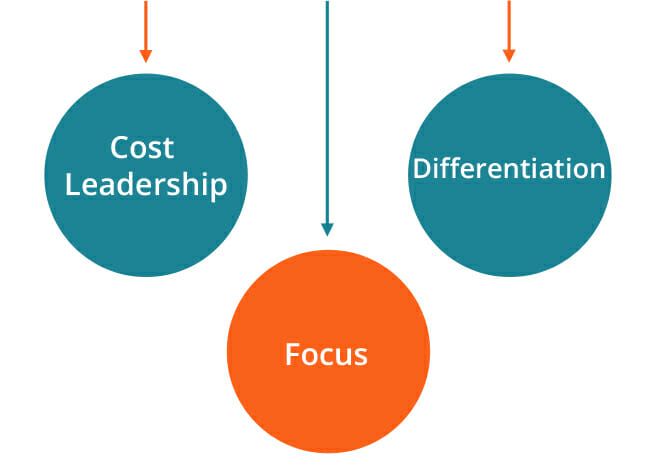Identifying Competitive Advantages Can Be Difficult
What is a Competitive Advantage?
A competitive advantage is an attribute that enables a company to outperform its competitors. This allows a company to achieve superior margins Operating Margin Operating margin is equal to operating income divided by revenue. It is a profitability ratio measuring revenue after covering operating and compared to its competition and generates value Value Added Value Added is the extra value created over and above the original value of something. It can apply to products, services, companies, management, and for the company and its shareholders.
A competitive advantage must be difficult, if not impossible, to duplicate. If it is easily copied or imitated, it is not considered a competitive advantage.

Examples of Competitive Advantage
- Access to natural resources that are restricted from competitors
- Highly skilled labor
- A unique geographic location
- Access to new or proprietary technology Intangible Assets According to the IFRS, intangible assets are identifiable, non-monetary assets without physical substance. Like all assets, intangible assets
- Ability to manufacture products at the lowest cost
- Brand image recognition
Constructing a Competitive Advantage
Before a competitive advantage can be established, it is important to know the:
- Benefit: A company must be clear about what benefit(s) their product or service provides. It must offer real value and generate interest.
- Target Market: A company must establish who is purchasing from the company and how it can cater to its target market.
- Competitors: It is important for a company to understand other competitors in the competitive landscape.
To construct a competitive advantage, a company must be able to detail the benefit that they provide to their target market in ways that other competitors cannot.
Strategies for Competitive Advantage

There are three strategies for establishing a competitive advantage: Cost Leadership, Differentiation, and Focus (Cost-focus and Differentiation-focus).
1. Cost Leadership
In a cost leadership strategy, the objective is to become the lowest-cost producer. This is achieved through large-scale production, where companies can exploit economies of scale.
If a company is able to utilize economies of scale and produce products at a cost lower than that of its competitors, the company is then able to establish a selling price that is unable to be replicated by other companies. Therefore, a company adopting a cost leadership strategy would be able to reap profits due to its significant cost advantage over its competitors.

2. Differentiation
In a differentiation strategy, a company's products or services are differentiated from that of its competitors. This can be done by delivering high-quality products or services to customers or innovating products or services.
If a company is able to differentiate successfully, the company would then be able to set a premium price on its products or services.
3. Focus
In a focus strategy, a company focuses on a narrow target market segment. This strategy is successful if the company is able to successfully create products/services that can cater to these customers. The focus strategy also has two variants;
- Cost-focus: Lowest-cost producer in a narrow market segment
- Differentiation-focus: Differentiated products/services in a narrow market segment

Competitive Advantage in the Marketplace
Three great examples include:
- McDonald's: McDonald's main competitive advantage relies on a cost leadership strategy. The company is able to utilize economies of scale and produce products at a low cost and, as a result, offer products at a lower selling price than that of its competitors.
- Louis Vuitton: Louis Vuitton's advantage relies on both differentiation and a differentiation-focus strategy. The company is able to be a leader in the luxury market and command premium prices through product uniqueness.
- Walmart: Walmart's advantage relies on a cost leadership strategy. Walmart is able to offer "everyday low prices" through economies of scale.
Importance of Competitive Advantage
A competitive advantage distinguishes a company from its competitors. It contributes to higher prices, more customers, and brand loyalty. Establishing such an advantage is one of the most important goals of any company.
In today's world, it is essential to business success. Without it, companies will find it difficult to survive.
Video Explanation of Competitive Advantage
Watch this short video to quickly understand the main concepts covered in this guide, including the definition of competitive advantage and how companies create it using various business strategies.
Other Resources
CFI offers the Financial Modeling & Valuation Analyst (FMVA)® Become a Certified Financial Modeling & Valuation Analyst (FMVA)® CFI's Financial Modeling and Valuation Analyst (FMVA)® certification will help you gain the confidence you need in your finance career. Enroll today! certification program for those looking to take their careers to the next level. To keep learning and advancing your career, the following resources will be helpful:
- Absolute Advantage Absolute Advantage In economics, absolute advantage refers to the capacity of any economic agent, either an individual or a group, to produce a larger quantity
- Opportunity Cost Opportunity Cost Opportunity cost is one of the key concepts in the study of economics and is prevalent throughout various decision-making processes. The
- Monopoly Monopoly A monopoly is a market with a single seller (called the monopolist) but with many buyers. In a perfectly competitive market, which comprises
- Law of Supply Law of Supply The law of supply is a basic principle in economics that asserts that, assuming all else being constant, an increase in the price of goods
Identifying Competitive Advantages Can Be Difficult
Source: https://corporatefinanceinstitute.com/resources/knowledge/strategy/competitive-advantage/
Posted by: gregoryleighte47.blogspot.com

0 Response to "Identifying Competitive Advantages Can Be Difficult"
Post a Comment